
|
|
 |

|


 What in the Ultra HD World? What in the Ultra HD World?Ultra HD and the Emperor's Clothes
Richard De Jong July 8, 2013 HDTV Solutions As more and more Ultra HD TVs are beginning to arrive in the marketplace from manufacturers like Sony, Toshiba, Sharp and SEIKI, I'm hearing a dismissive undercurrent. Like the child in the Hans Christian Andersen tale, some pundits, who look at the first iterations of Ultra HD (4K) TVs, cry out "the Emperor has no clothes!" Or in TV tech-speak, unless you are sitting ultra-close to the TV, your naked eye cannot perceive the difference between HD's 1080p resolution (HD = 1920 x 1080 pixels) and Ultra HD's 2160p resolution (Ultra HD = 3840 x 2160). Therefore, common sense dictates that those agog over Emperor Ultra HD's new clothes are deceiving themselves. 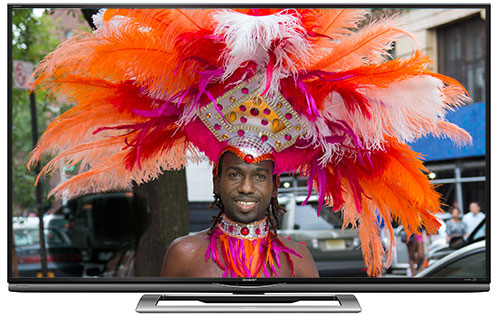 Sharp LC-70LEUD1 70-inch Ultra HD TV Even though I personally tend to sit close enough to a TV to see the difference between HD and Ultra HD displays, I would begrudgingly agree that many viewers may not experience that Ultra HD WOW factor that the TV honchos were trumpeting at the recent Ultra HD conference in New York. But, there's an important qualification to that last statement, if - and this is a big if - if resolution is the only differentiator. And the way that Ultra HD has been titled and marketed, you would assume that resolution is the only separator between HD and Ultra HD displays. But the speakers in the "Understanding Ultra HD: Not Just Bigger; It's Better" panel described a potential Ultra HD picture that could be noticeably better than HD, even at a normal viewing distance, because of an improvement in factors like dynamic range and extended color space. Also, to enhance the immersive experience possible with big screen Ultra HD TVs, conceivably a virtual 22.2 channel audio component could be included as part of the Ultra HD standard. The reason that I use terms like "possible" and "conceivably" is because the current video system is based on technology and standards that go back sixty years. To return to the Emperor analogy, if we continue to dress our Ultra HD TVs in 60 year old clothes, it will indeed be difficult to tell the difference between HD and Ultra HD displays. Electronic imaging sage, Joe Kane is advocating the development of a new video system with the capabilities to deliver improvements like wider color gamut, greater bit depth, higher dynamic range and increased frame rates. In other words, give Emperor Ultra HD a brand new wardrobe that the public and the pundits can all agree looks better than those outdated HD duds. 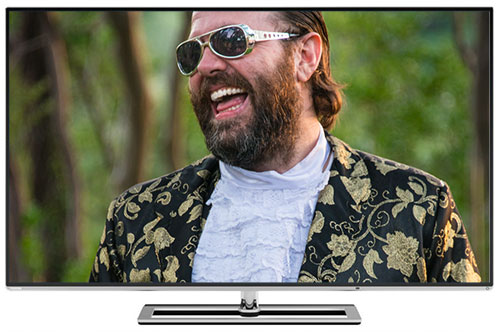 Toshiba L9300U 58-inch Ultra HD TV Of course replacing the current established broadcast TV standards with this new video system may take years. Luckily, the delivery of Ultra HD content is not necessarily dependent on traditional network broadcast systems. In fact, many media experts predict that early sources of Ultra HD programming will be distributed over the Internet. Supposedly, Netflix is already exploring streaming Ultra HD content. With increased bandwidth from Internet providers like Google Fiber and 4K compression schemes from companies like Eye IO and new 802.11ac wireless routers, the ability to stream Ultra HD shows to your new Ultra HD TV is quickly becoming a reality. Add to that, the Blu-ray Association (BDA) has formed a task force to study an Ultra HD Blu-ray format. Hopefully, everyone, content creators and distributors, can come to an agreement on a standard that takes advantage of the current capabilities of the first wave of Ultra HD TVs, while remaining flexible to address the upgrade possibilities of future Ultra HD displays. 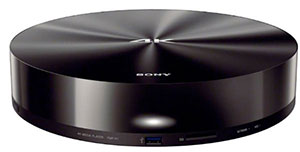
In the meantime, Sony is releasing their Ultra HD media player, the FMP-X1, which is a two terabyte hard drive in a stylish round case. For $699, the player is loaded with ten native 4K movies. Sony is establishing a streaming service where you can rent or buy other native 4K movies and programs that you download to the FMP-X1's hard drive. Right now, the media player is only compatible with Sony's three Ultra HD TV models. A Sony representative has confirmed that, "the feature films on the box and from the forthcoming service were either shot in or mastered in true 4K which incorporates the expanded color gamut which can be rendered on our TVs with TRILUMINOS Display." 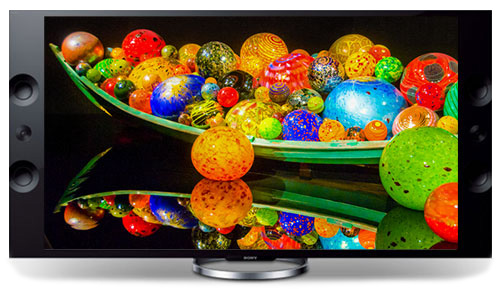 Sony XBR-65X900A 65-inch Ultra HD TV Perhaps in the near future, Ultra HD TVs will be supported by a tailored, brilliant and melodious new video ecosystem that can delight and immerse us for years to come. I'll have more Ultra HD coverage soon. Stay tuned. 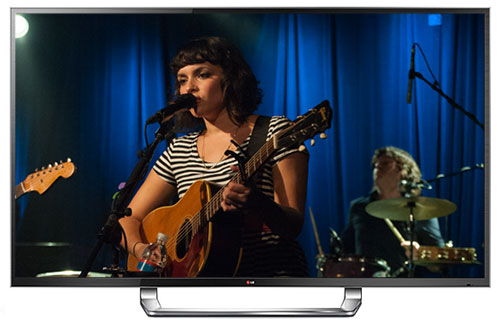 LG 84LM9600 84-inch Ultra HD TV |
Bookmark:
![]() del.icio.us
del.icio.us
![]() Reddit
Reddit
![]() Google
Google
| Send this Page | Print this Page | Report Errors |

